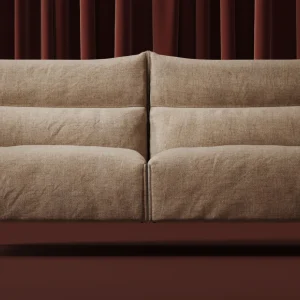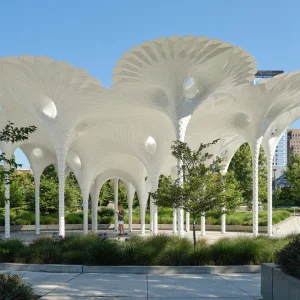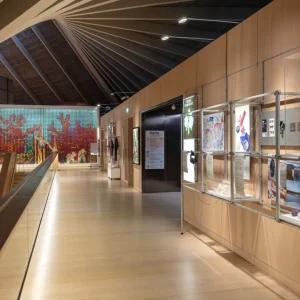MSU broke ground for the museum on March 16, 2010. The facility is named in honor of Eli and Edythe Broad, longtime supporters of the university who provided the lead gift for the museum. The Broads’ gift of $28 million, with $21 million designated for construction of the building and $7 million to be used for acquisitions, exhibitions and operations, was the catalyst for the world-class project.
The three-level, 46,000 square feet building, to be located at the corner of Grand River Avenue and the Farm Lane campus entrance, will feature a design constructed of steel and concrete with a pleated stainless steel and glass exterior. The museum will be adjoined by an expansive outdoor sculpture garden as an extension of the east entrance courtyard and by a large pedestrian plaza at the west entrance.
Related functions supported within the building include: education center; museum shop; visitor cafe and gathering space and study center.
The design also includes ecologically sustainable features that will enable LEED certification. The facility is designed to maximize the use of day-lighting to save energy and increase occupant comfort. Solar control mechanisms are integrated to take advantage of the sun’s energy for lighting and heat.
The museum features pedestrian-friendly site richly planted with mature trees and shrubs; energy-efficient heating, ventilating and cooling system for reducing energy use; occupancy sensors to control lighting and selected features of the heating, ventilation and air conditioning system; plumbing system that minimizes fresh water waste; and recycling stations to minimize the amount of waste products entering the waste stream.
Hadid, a Pritzker Prize-winning architect from London, was selected as the winner of an international design competition for the museum in January 2008. Teams from Hadid’s firm worked with university representatives as well as local architectural and construction firms to complete the design and building plans.
The groundbreaking will be followed by 20 months of construction, leading to a dedication and opening in early 2012. Once completed, the museum will have more than 70% gallery space and room for large art works to be displayed. The primary focus of the museum will be contemporary art. The museum is expected to serve not only the students and faculty of MSU but also the Greater Lansing community and all of central Michigan.





